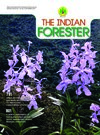Biodiversity Loss and Conservation of Natural Resources in Cold Desert Ecosystem of Himachal Pradesh, India
DOI:
https://doi.org/10.36808/if/2018/v144i9/108305Keywords:
Biodiversity, Conservation, Cold Desert Ecosystems, Phytosociology, Forest Ecosystem, Alpine Ecosystem and Agro Ecosystem, Agricultural Crops.Abstract
The present investigation was conducted in village Goshal of District Lahaul and Spiti, (Himachal Pradesh), India, by differentiating the village into three ecosystems viz., Forest ecosystem, Alpine ecosystem and Agro ecosystem to carry out phytosociological studies. Each ecosystem was divided into nine different grids for sampling following quadrate method. Three quadrates were laid in each grid in all the three ecosystems for recording of phytosociological data. In forest ecosystem, among trees, the species of maximum occurrence was Juniperus recurva (IVI 62.89), while in alpine ecosystem Dactylis glomerata (IVI 62.49) dominated among grasses having maximum percentage contribution (20.83%), and Juniperus communis among shrubs. In agro ecosystem, Dactylis glomerata and Agropyron longearistatum among grasses were found to be the most dominating species with average IVI value of 50.70 and 49.30, respectively. Among agricultural crops, the maximum area was occupied by the cash crops like peas and potato. Peas were sown in 60.19 per cent of the total cropped area. It was observed that farmers have switched over to the cropping of cash crops which are economically beneficial and is affecting the present status of surrounding natural resources resulting in loss of biodiversity.
References
Bawa R. (2000). Structural, functional and economic linkages between major ecosystems of cold deserts in Himachal Pradesh. UHF, Solan, Project Report. 108p.
Blackman G.E. (1935). A study of statistical method of the distribution of species in grassland association. Ann. of Bot., 49: 749-74.
Chaudhuri K.K., Mishra D.K., Singh V. and Shukla J.K. (2005). Harnessing Thar biodiversity for medicinal uses. Indian Forester, 131(3): 288-307.
Decocq G. (2002). Patterns of plant species and community diversity at different organization levels in a forested riparian landscape. J. Veg. Sci., 13: 91-106.
Dhaulkhandi M., Dobhal A., Bhatt S. and Kumar M. (2008). Community structure and regeneration potential of natural forest site in Gangotri. Ind. J. Bas. and Appl, Sci., 4: 49-52.
Galav P.K., Katewa S.S., Chaudhary B.L. and Jain A. (2005). Phytosociological studies on the grassland community of Southern Aravalli Hills of Rajasthan. Indian Forester, 131(7): 943-952.
Gardner T.A., Barlow J., Sodhi N.S. and Peres C.A. (2010). A multi-region assessment of tropical forest biodiversity in a humanmodified world. Biol, Conserv., 143: 2293-2300.
Kumari A. and Tripathi K.P. (2007). Phytosociological studies of the pteridophytes in Tarai forest of North India. Ind. J. For., 30: 445-450.
Mishra C. (2000). Socioeconomic transition and wildlife conservation in the Indian Trans-Himalaya. J. Bomb. Nat. Hist. Soci., 97: 25–32.
Negi H.S. (2002). Studies on woody species diversity of Sangla valley (HP). Msc. Thesis. Dr Y.S. Parmar University of Horticulture and Forestry, Nauni, Solan, 29-30pp.
Oosting H.J. (1958). The study of plant communities. Witt Freeman & Co. San Francisco.
Phillips E.A. (1959).Methods of vegetation study. Henry halt & Co.inc.
Qureshi R.A., Ahmad I. and Muhammad I. (2006). Ethnobotanical and phytosociological studies of Tehsil Gujar Khan District Rawalpindi. Asi. J. of Plant Sci., 5: 890-893.
Raunkier C. (1934). The life forms of plant and statistical plant geography: Clarendon Press, Oxford, England.
Rawat R.S. (2001). Phytosociological studies of woody vegetation along an altitudinal gradient in a montane forest of Garhwal Himalayas. Ind. J. For., 24: 419-426.
Rawat Y.S. and Everson C.S. (2013). Availability and use of willow species in representative cold desert areas of Northwestern Himalaya, India. J. Mount. Sci., 10: 472-481.
Rohit D. and Neelam S. (2008). Altitudinal changes in dominance diversity and species richness of tree species in a temperate forest of Garhwal Himalaya. Life Sci. Jour., 5: 53-57.
Samant S.S., Dhar U. and Palni L.M.S. (1998). Medicinal Plants of Indian Himalaya: Diversity distribution potential values. Gyanodaya Prakashan, Nainital.
Sandtner O. (1954). Vegetation verhltnisse Sudbayerns. Literarischartistische Anstalt, Munich:1-910.
Sharma R.K., Sharma S. and Sharma S. S. (2005). Seed germination behaviour of some medicinal plants of Lahaul and Spiti cold desert (Himachal Pradesh): implications for conservation and cultivation. Department of Biosciences, Himachal Pradesh University, Shimla.
Singh D.K. and Hajra P.K. (1996). Floristic diversity. In: Gujral G. S. and Sharma V. (Eds.) changing perspectives of biodiversity status in the Himalayas. British Council Division. New Delhi, Thakur C.L., Bhardwaj S.D., Bawa R. and Chauhan R. (2009).
Phytosociological studies of winter migratory grazing site in Himachal Pradesh, India. Environ. And Ecol., 27 :663-666.
Downloads
Downloads
Published
How to Cite
Issue
Section
License
Unless otherwise stated, copyright or similar rights in all materials presented on the site, including graphical images, are owned by Indian Forester.





